Lead and Childhood: Risks and their Management (The Middle Urals Experience)
Boris A. Katsnelson1, Larissa I. Privalova2, Sergey V. Kuzmin1,2,
Olga L. Malykh3, Vladimir B. Gurvitch3, Sergey A. Voronin4,
Galina V. Matyukhina4, Tamara D. Degtyareva1, Alexander P. Marshalkin5,
Anatoly A. Prokopyev6 , Svetlana V. Gnezdilova3, Ekaterina P. Kireyeva1,
and Julia I. Soloboyeva1
1 Medical Research Centre for Prophylaxis and Health Protection in Industrial Workers (Ekaterinburg, Russia)
2 Ural Regional Centre for the Environmental Epidemiology (Ekaterinburg, Russia)
3 Sverdlovsk Regional Office of the Federal Service on Supervision in Sphere of Protection of the Consumers’
Rights and Well-Being of Person in the Russian Federation – "Rospotrebnadzor" (Ekaterinburg, Russia)
4 Centre for Hygiene and Epidemiology in the Sverdlovsk Region (Ekaterinburg, Russia)
5 Ural State Pedagogical University (Ekaterinburg, Russia)
6 Ural Medical Academy (Ekaterinburg, Russia)
Corresponding author: Professor Boris A. Katsnelson, MD, DSc.
Head, Dept of Toxicology and Bioprophylaxis,
Medical Research Centre for Prophylaxis and Health Protection in Industrial Workers
30 Popov Str.
620014 Ekaterinburg, Russia
Telephone: 007-343-371-87-21
E-mails: bkaznelson@ymrc.ru,
bkaznelson@etel.ru
CEJOEM 2008, Vol.14. No.3.: 215-238
Key words:
lead, preschool children, mental retardation, renal damage, pregnancy, preventive measures
Abstract:
During 1996-2008 the authors have been and are still developing an on-going research and practical programme
aimed at assessing lead-induced risks for children (including prenatal impacts) in several heavily industrialized
towns of the Sverdlovsk Region (Middle Urals, Russia), and then at abating these risks. As we have found, there
exists in the towns under study a considerable body-burden of lead in both preschool children and pregnant women
(as estimated by their blood lead levels - PbB), and in the foetuses of the latter (judging from lead levels in
cord blood), this body-burden depending on the size and the proximity of the copper smelters. Although these levels
are, on average, similar to those reported from the USA and some European countries and are even lower as compared
with some others, it has been demonstrated that (a) the prevalence of children’s mental retardation in different
towns correlated with PbB levels typical of them, and (b) the higher the PbB in cord blood, the higher the probability
of some abnormal conditions in babies during the 1st year of life. The US EPA "Uptake/Biokinetic Model for
Lead" fed with available quantitative data on lead in different environmental compartments provided satisfactory
predictions of both the average value and the distribution of blood lead levels in children dwelling in different
towns and, for one of them, in different periods. The model estimates of the contribution made by those compartments
to the lead body burden was used for developing an adequate risk management scenario, which, when implemented even
partly, has given considerable prophylactic effects. In addition, the authors recommend measures of the so-called
biological prophylaxis, the effectiveness of which for children has been proven by many earlier published studies,
and this research provides similar evidence for pregnant women.
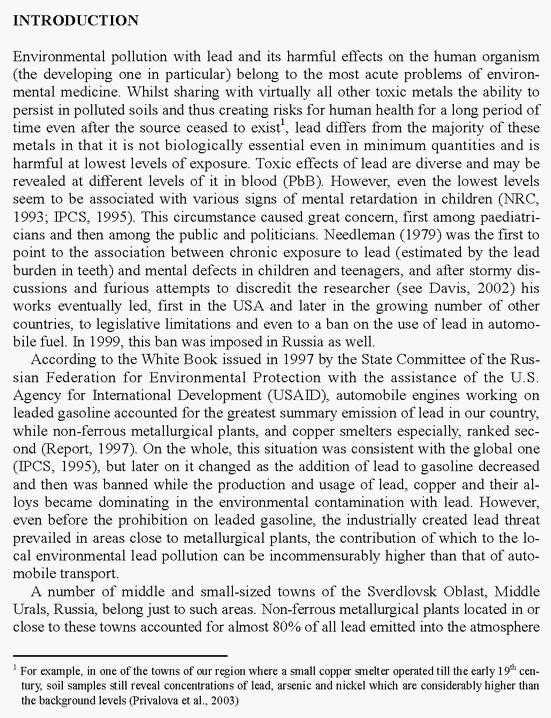
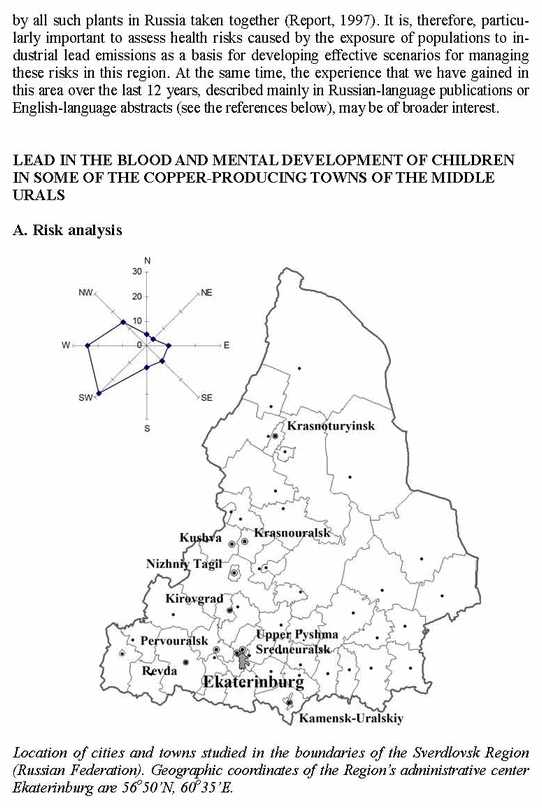
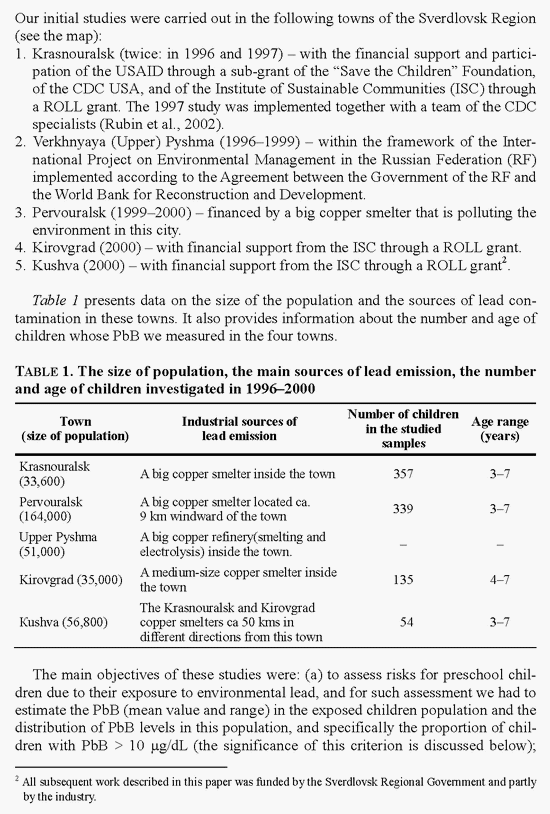
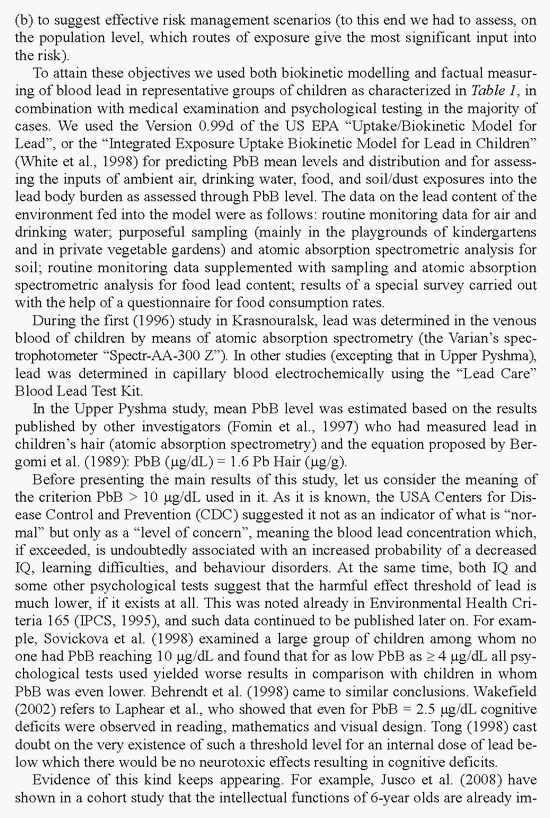
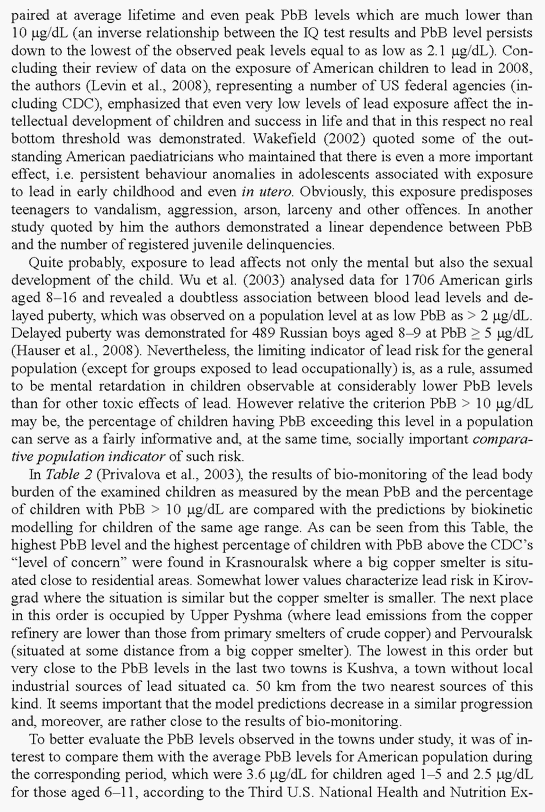
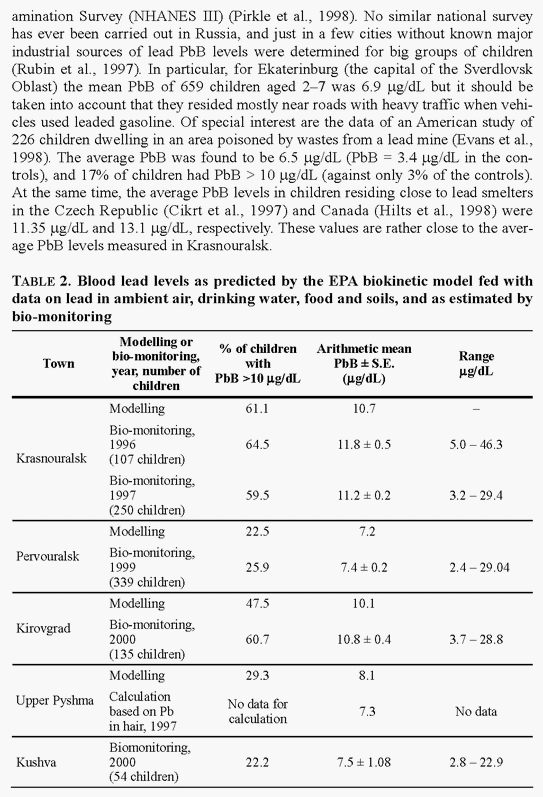
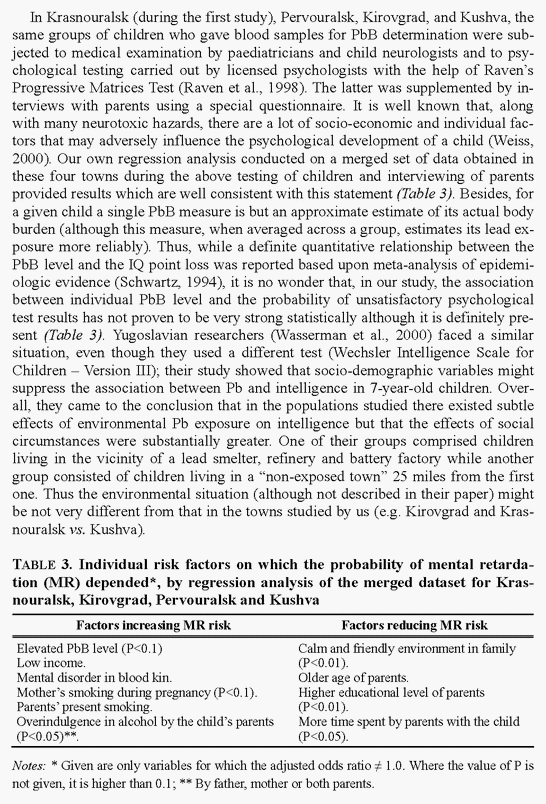
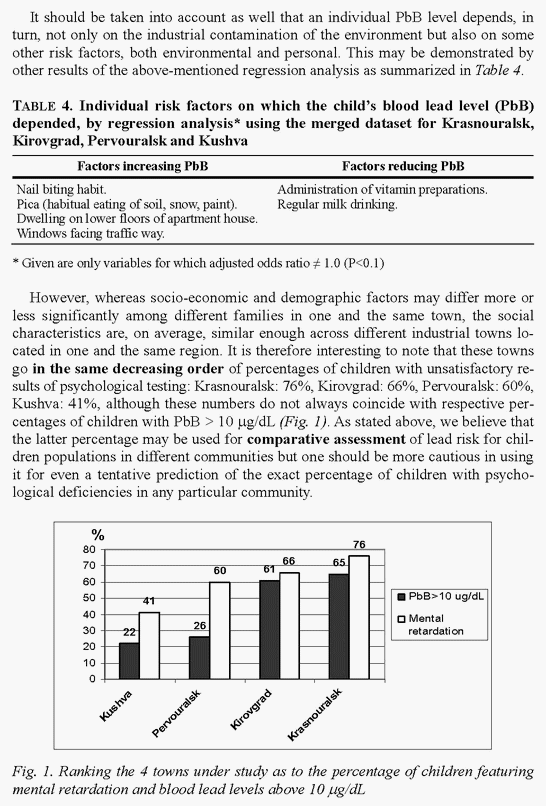
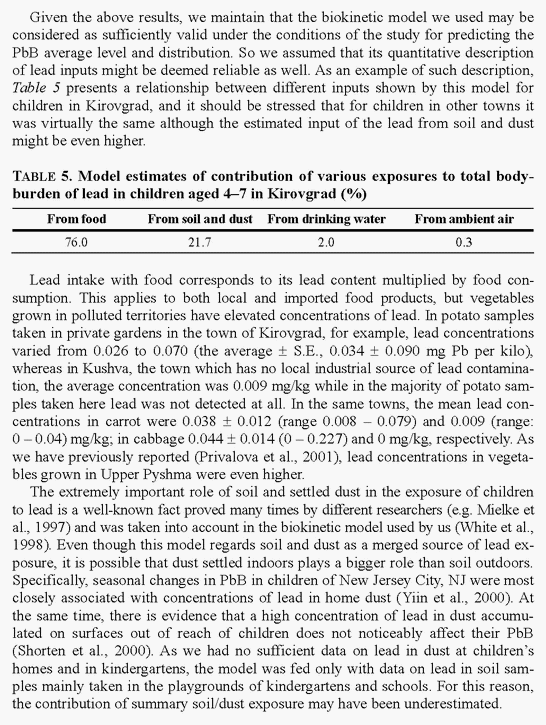
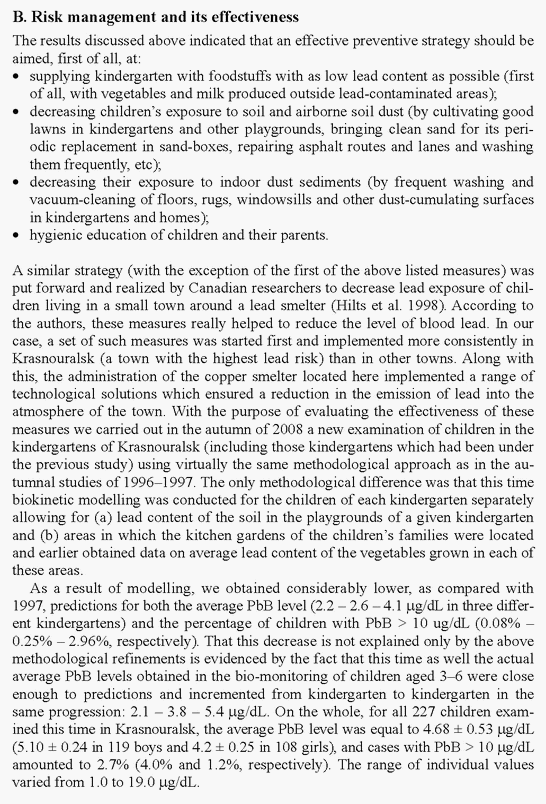
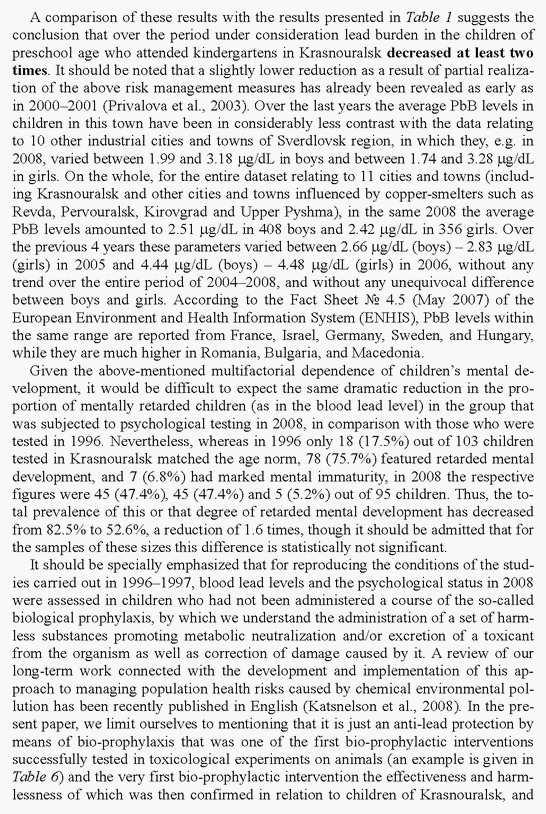
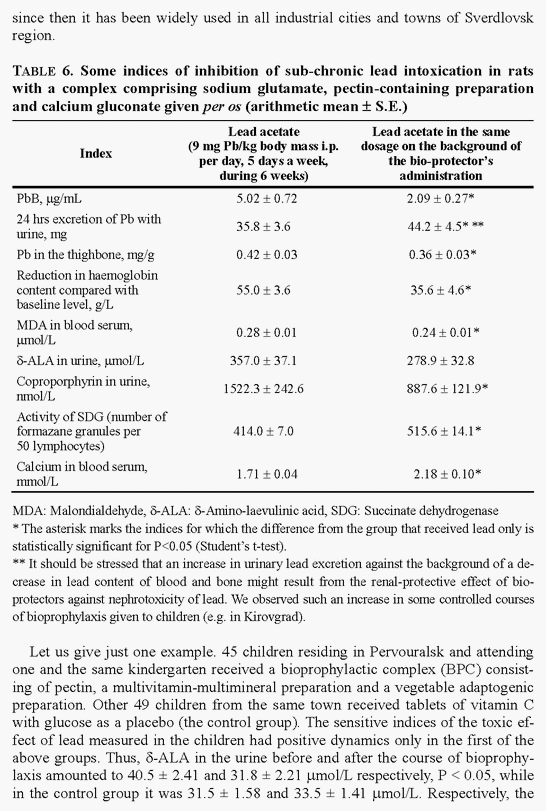
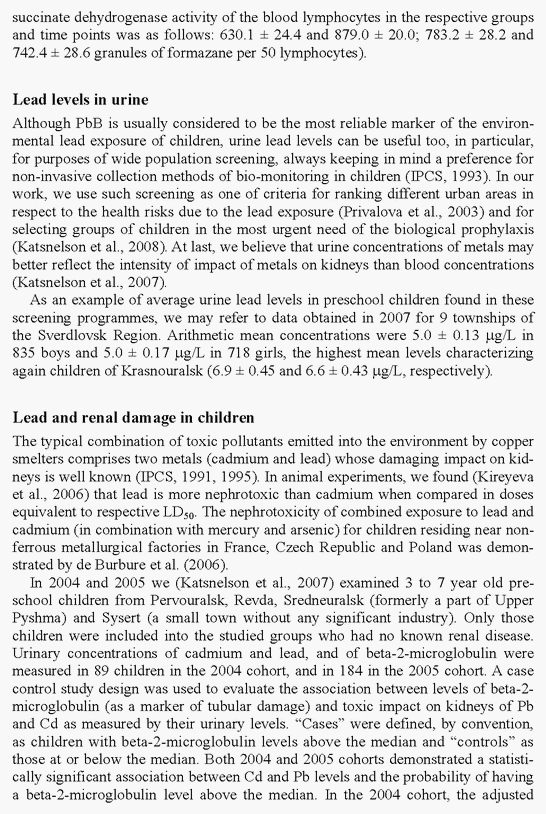
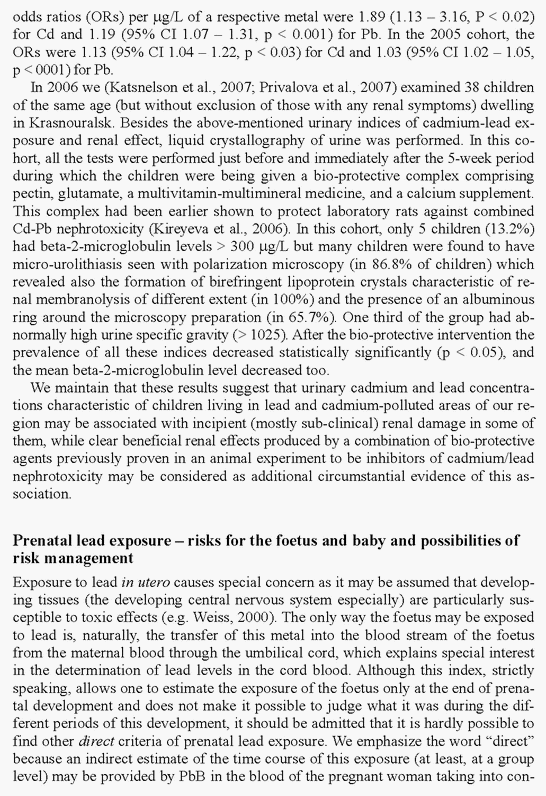
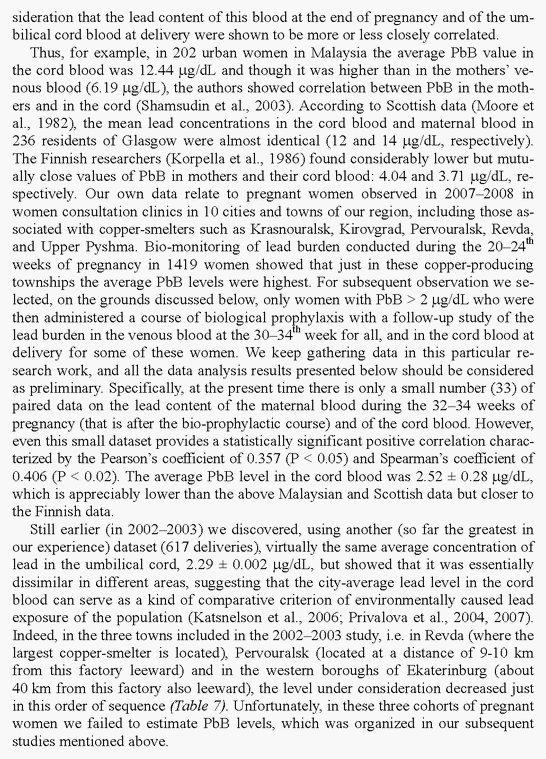
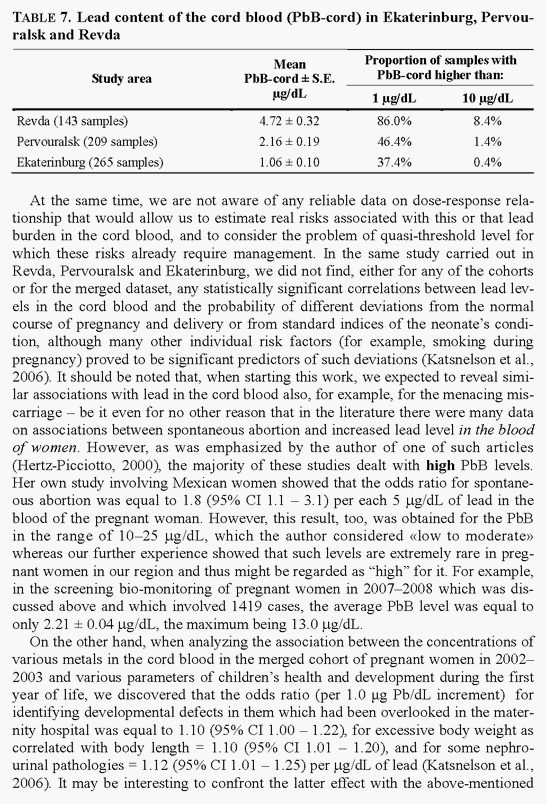
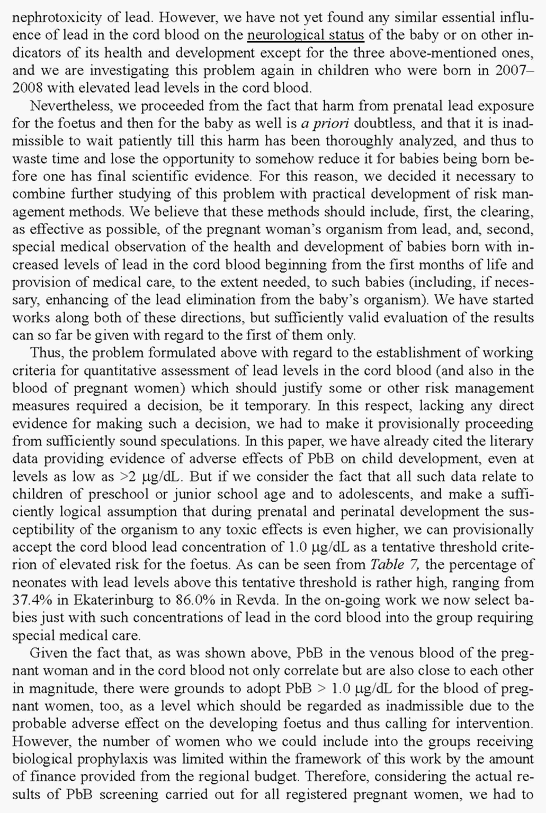
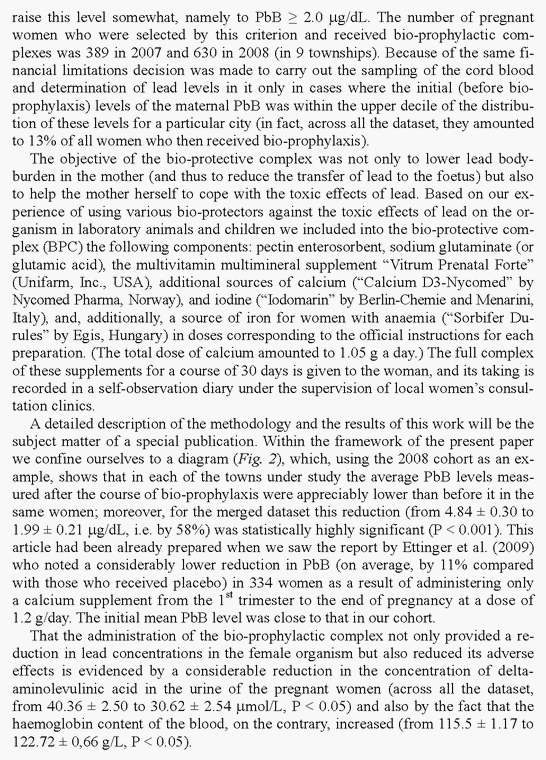
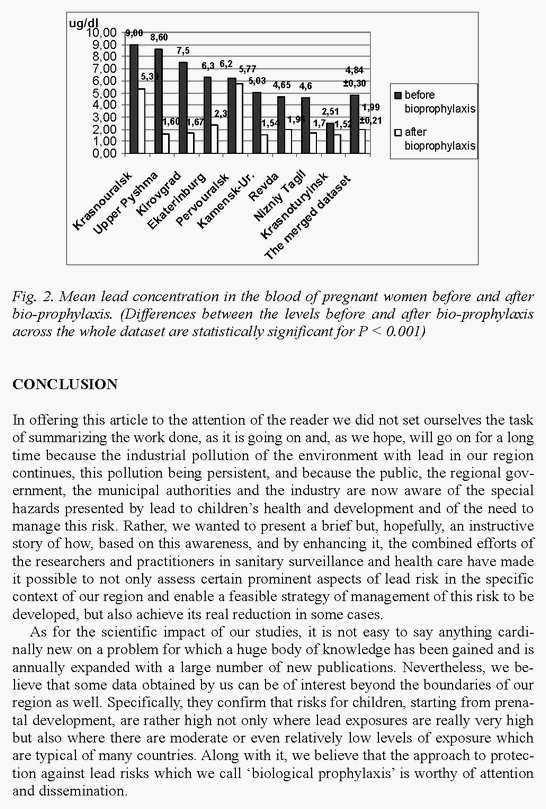
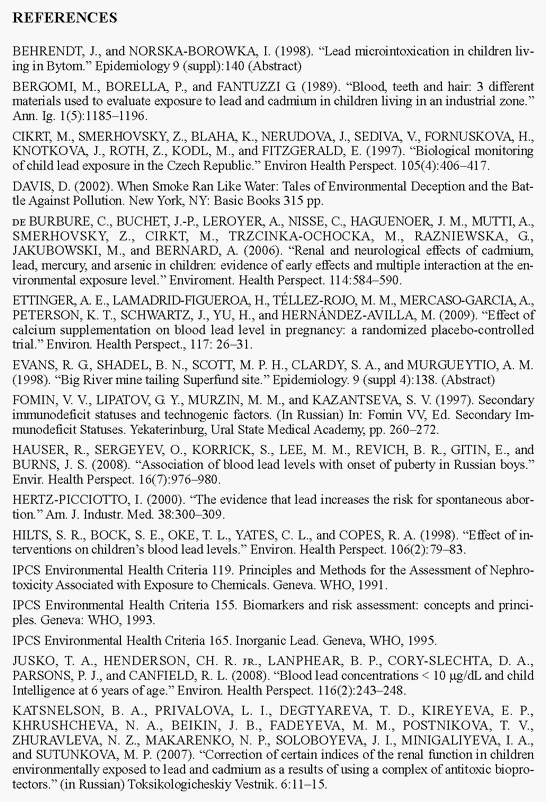
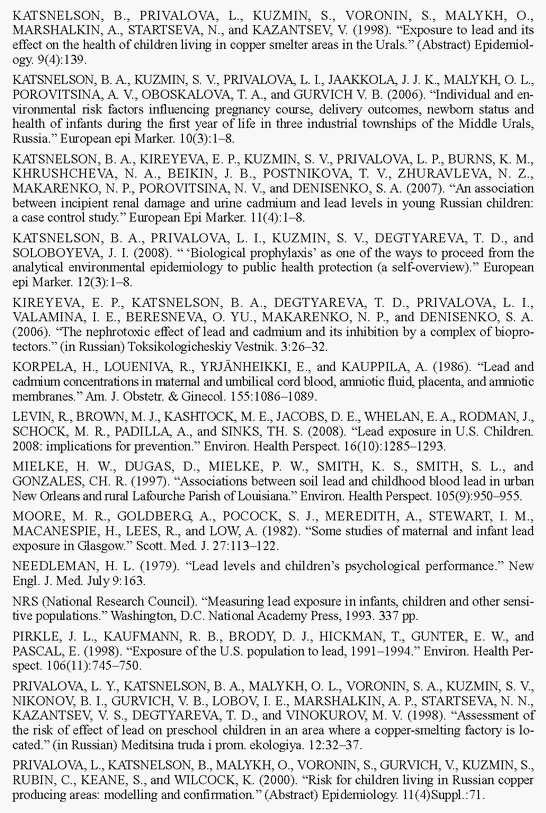
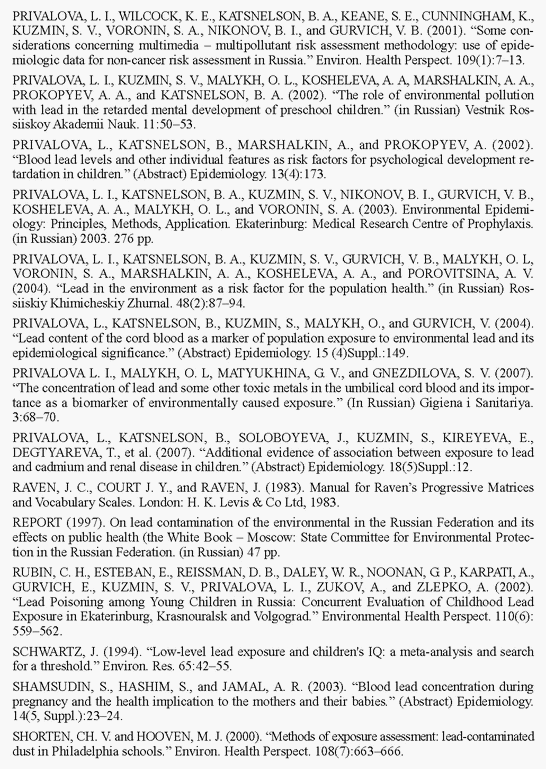
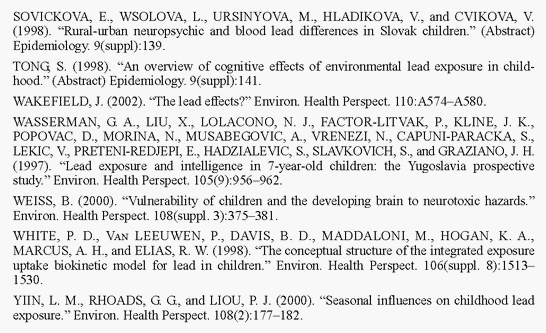
Received: 29 January 2009
Accepted: 12 May 2009
| Back |













































